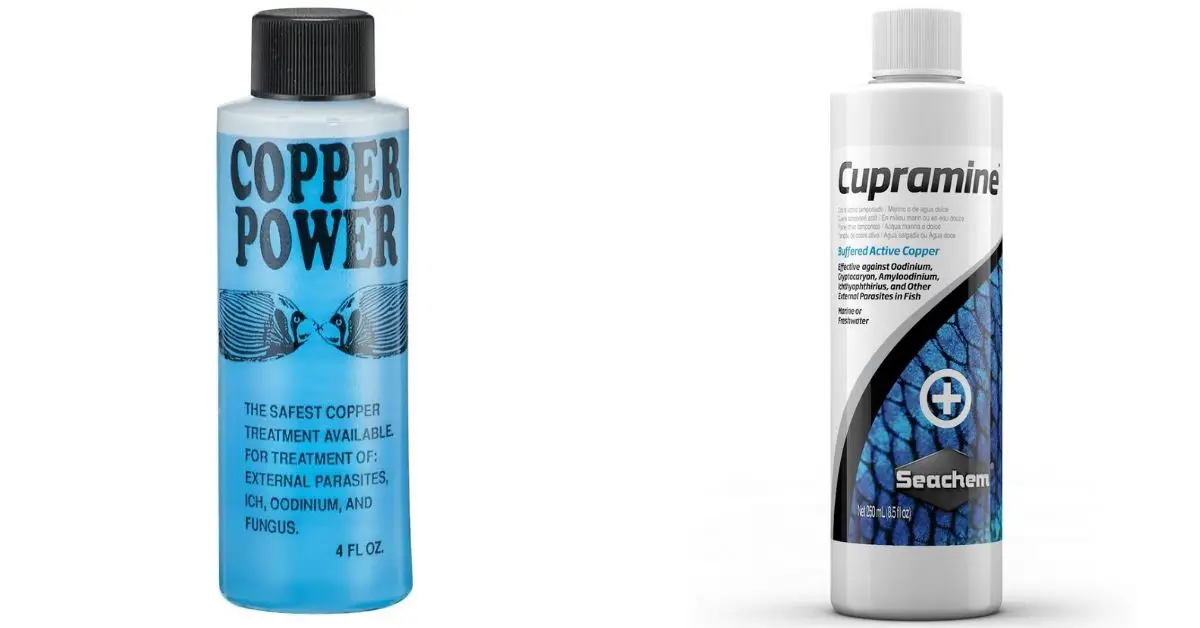When it comes to taking care of your home aquarium there are many things that you should consider. This involves not only which ish you pair together, the size of your tank and the decorations that you put in it, but also the conditions of the tank.
Even if you take all the care in the world creating your ideal home tank, if you have the wrong water conditions, for example, the wrong levels of Co2, the wrong salinity, the wrong amount of light, or the wrong amount of nutrients then looking after your tank can very quickly and easily become a nightmare.
One of the most important things to keep a track of in your tank is the copper level. Here we will tell you everything that you need to know about finding the right copper level for your tank, how to maintain it as well as the benefits that having copper in your tank’s water provides to your fish.
What does copper treat in saltwater fish?
Copper essentially helps to keep your home aquarium under control by limiting the amount of algae and fish parasites that are able to grow in your tank. It is commonly used for home aquariums and display tanks as copper fulfills this job without discoloring the water.
This makes it an ideal additive for helping to keep your home tank clean without making the process too laborious or obvious (as some cleaning products can cause the water to change color).
Copper power vs. Cupramine
So, when it comes to using copper in your home aquarium there are two main options that are used by hobbyists. These are copper power and cupramine (a copper treatment).
Many hobbyists seem to start with cupramine given its great reputation but appear to change to copper powder after not too long a time period. This is because although both products will do a fantastic job of keeping your tank nice and clean the levels of copper differ with each product.
Some fish can be significantly more sensitive to a change in copper levels than others. This means that high levels of copper in your tank’s water can actually become toxic to certain fish. A lot of enthusiasts have claimed that their fish were much more tolerant of the use of copper power than they were of cupramine.
So, ideally, you want to be able to clean your tank without harming any of your fish. This means that if you take the opinion of the vast majority of hobbyists that have shared their opinion online, then it is best to use copper power in your home tank.
This is simply because it can be tolerated by a wider variety of fish, making it a safer bet when adding it to your water. The last thing you would want is to hurt your fish during the cleaning process.
What should the copper level be in a saltwater tank?
When adding copper to your tank’s water you should complete the process in two installments in order to raise the copper level more gradually. You should do this over a period of 48 hours.
For the first dose, you should aim to raise your tank’s copper level to 0.25 mg per liter and then the same again to bring the final level to 0.5 mg per liter of water in your tank.
You should be sure to guess the number of gallons of water that you have in your tank correctly as this will affect how much copper product to add. Remember that if you have any corals, rocks, or other decorations then these will take up room and displace the water. So, do not simply take the gallon amount stated for your tank.
What saltwater fish are sensitive to copper?
Although cupramine is a copper product that is more widely tolerated there are still a number of different fish that are particularly sensitive to it. These are predominantly fish without scales, such as angels, wrasse, and tangs.
Copper can also be used as a treatment for ich. Ich is also commonly referred to as the white spot disease and affects all kinds of fish. It is a parasitic disease and is very common among aquarium fish, unfortunately with a high mortality rate.
So, if you are planning on using copper as a treatment for ich for fish that are particularly sensitive to increased copper levels then it is good to note that there are other methods available for treating your sick fish. These include a number of copper-free treatments which are perfectly safe for all fish and other creatures in your tank.
Alternatively, although ich does, unfortunately, have a very high mortality rate, fish do have a number of natural ways to rid themselves of ich. So, if there are no available alternatives you may find that your fish is able to simply get better on their own, however, it is still a good idea to keep an eye on them to make sure that they keep improving.
Conclusion
Copper has a number of uses for home aquariums such as helping to keep the tank clean and curing ich. However, you must monitor the copper levels in your home tank carefully as some fish can be particularly sensitive to high copper levels. These are most commonly known to be scaleless fish.
When it comes to which copper treatment to use for saltwater fish most people find that copper power is a much more gentle option than other methods. This means that it can be used in a tank with fish that are normally viewed as highly sensitive to copper.
When adjusting the copper levels in your tank it is important to do so gradually, and also according to the label. However, this should usually aim to be 0.5 mg per liter of water in your tank. When calculating this make sure to take into account any displaced water.
References:
- Use of copper in marine aquaculture and aquarium systems https://edis.ifas.ufl.edu/publication/fa165


